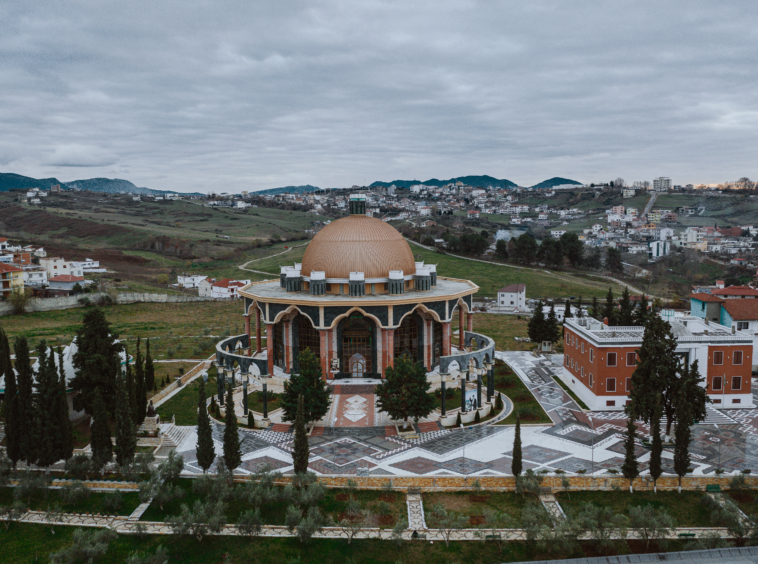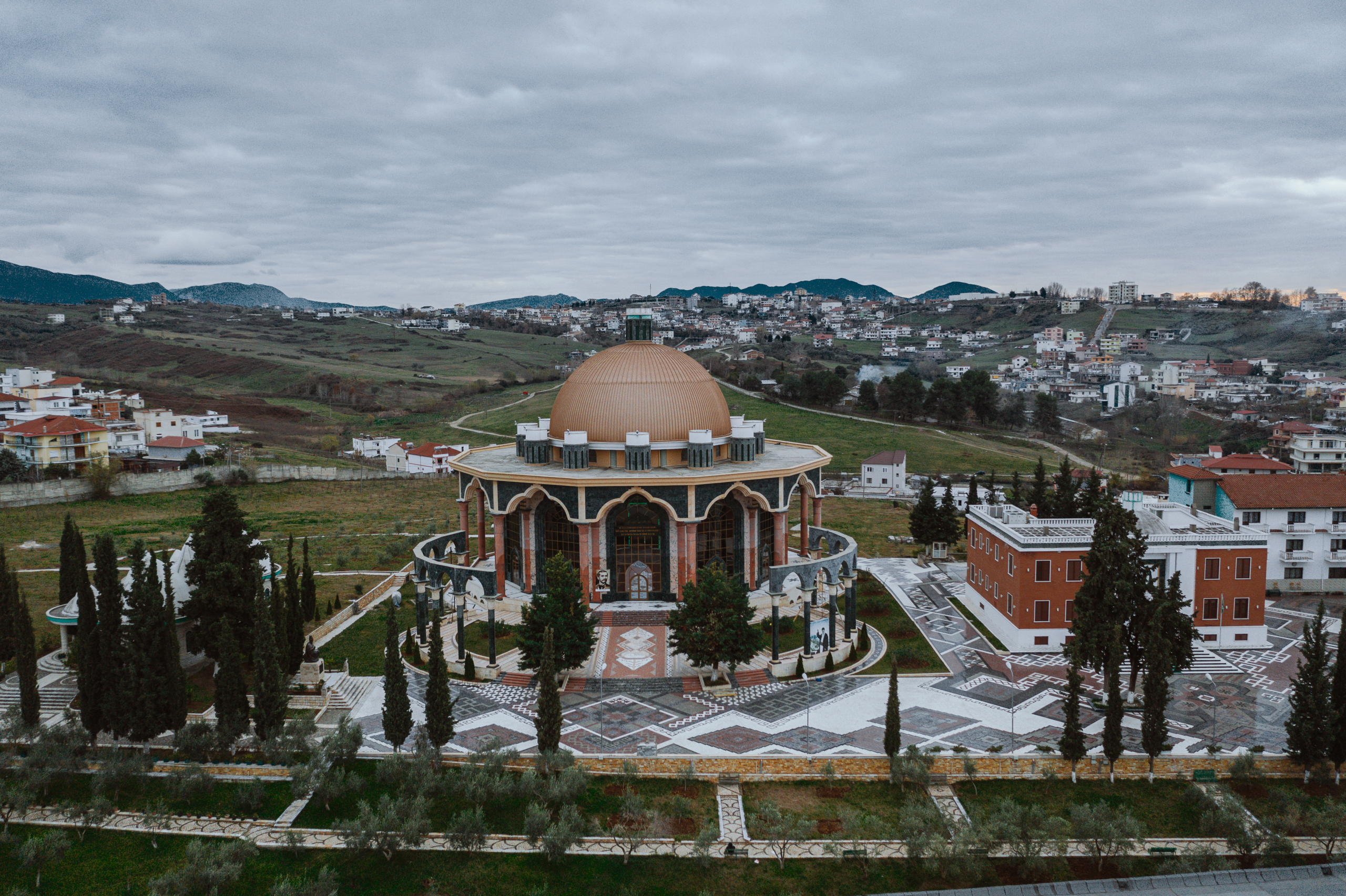World Bektashi Headquarter
Details
Updated on December 30, 2024 at 9:02 amInformation
- Author: Unknown
- Year Built: 1930; reconstructed and inaugurated in 2015
Description
Located on the eastern side of Tirana, the World Bektashi Headquarter stands as a monumental and sacred site, encompassing the Tekke, a museum, and other key spaces dedicated to preserving the rich history and traditions of the Bektashi order. This center reflects the spiritual, cultural, and architectural significance of Bektashism, which unites Shia, Sufi, and Islamic philosophies.
Architectural Features
Originally constructed in 1941, the building is a solid and imposing structure adorned with marble mosaics in diverse shapes and colors. These decorative elements highlight the spiritual essence and aesthetic values associated with Bektashism. The structure has evolved over time, undergoing significant transformations to adapt to changing historical and social circumstances.
Historical Significance
The Bektashi order faced significant challenges throughout its history, including its outlawing by Mustafa Kemal Atatürk in Turkey in 1923. This led to the relocation of the Bektashi World Headquarters to Albania in 1925, establishing a new spiritual center for the order.
However, the Bektashi community in Albania faced further trials during the socialist regime. In 1967, religious institutions were banned, and the World Headquarters ceased operations. The building was repurposed as a nursing home and later served as offices for agricultural farms. Despite these setbacks, the Bektashi order endured, and with the fall of communism in 1990, the community began to rebuild.
Reconstruction and Modern Role
The World Religious Center of Bektashism was reconstructed after 1991, symbolizing the revival of the order and its enduring importance in Albania and beyond. The inauguration of the newly restored center on September 8, 2015, marked a significant milestone in the history of the Bektashi community.
The Bektashi Museum
A central feature of the site is the museum, which chronicles the global and Albanian history of Bektashism. Through its exhibits, visitors can gain insight into the philosophical and spiritual teachings of the Bektashi order, its rituals, and its contributions to Islamic thought.
The museum includes three distinct spaces, each reflecting important aspects of Bektashi culture:
- The Chimney-Coffee Shop: A gathering space symbolizing hospitality and community.
- The Ashura Space: Dedicated to the commemoration of Ashura, a significant event in Islamic history and Bektashi tradition.
- The Pilgrimage Space: Highlighting the importance of spiritual journeys in Bektashi practices.
Cultural and Spiritual Legacy
Today, the World Center of Bektashis serves as a spiritual haven, a cultural institution, and a symbol of resilience. It continues to unite followers of the Bektashi order while offering a welcoming space for visitors interested in exploring its rich heritage.
The site’s restoration and continued use demonstrate the enduring relevance of the Bektashi order in fostering spiritual and philosophical dialogue, making it a vital part of Albania’s religious and cultural landscape.


